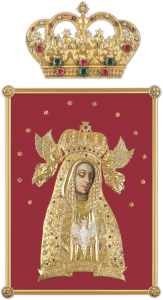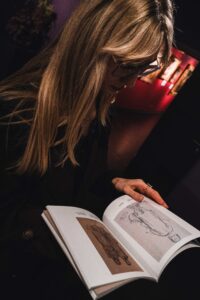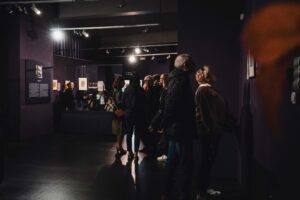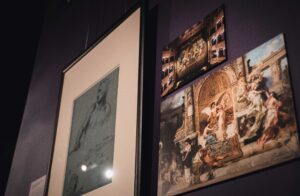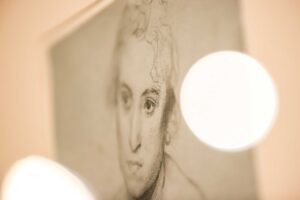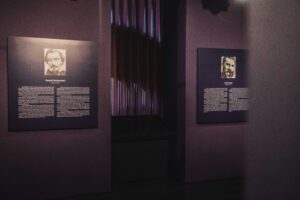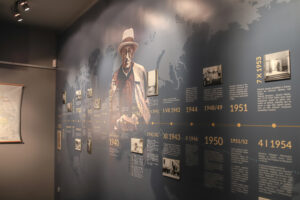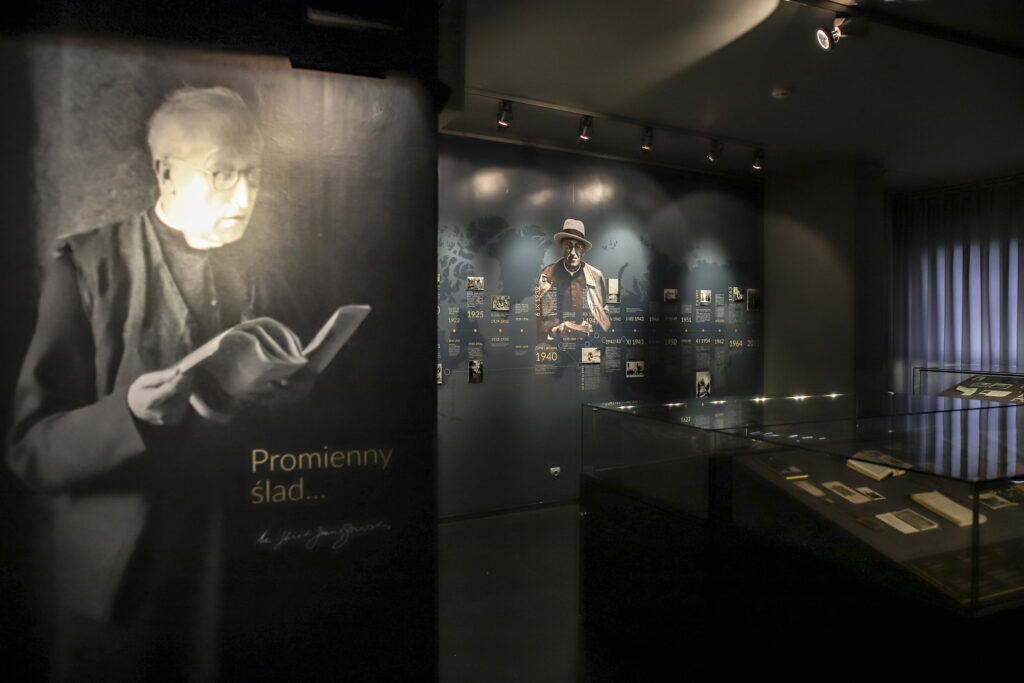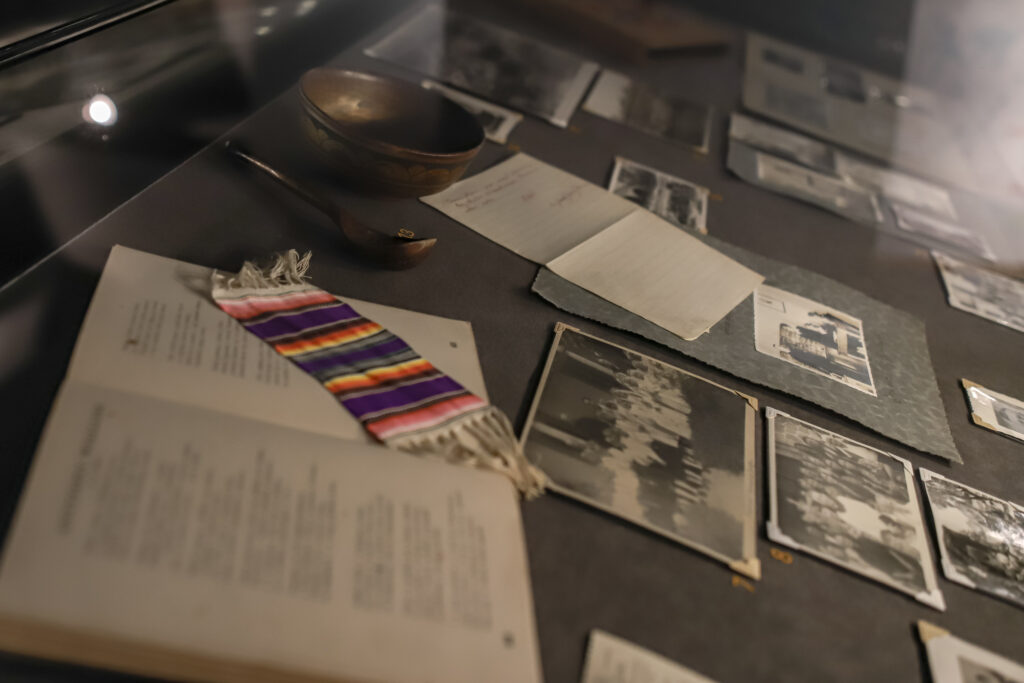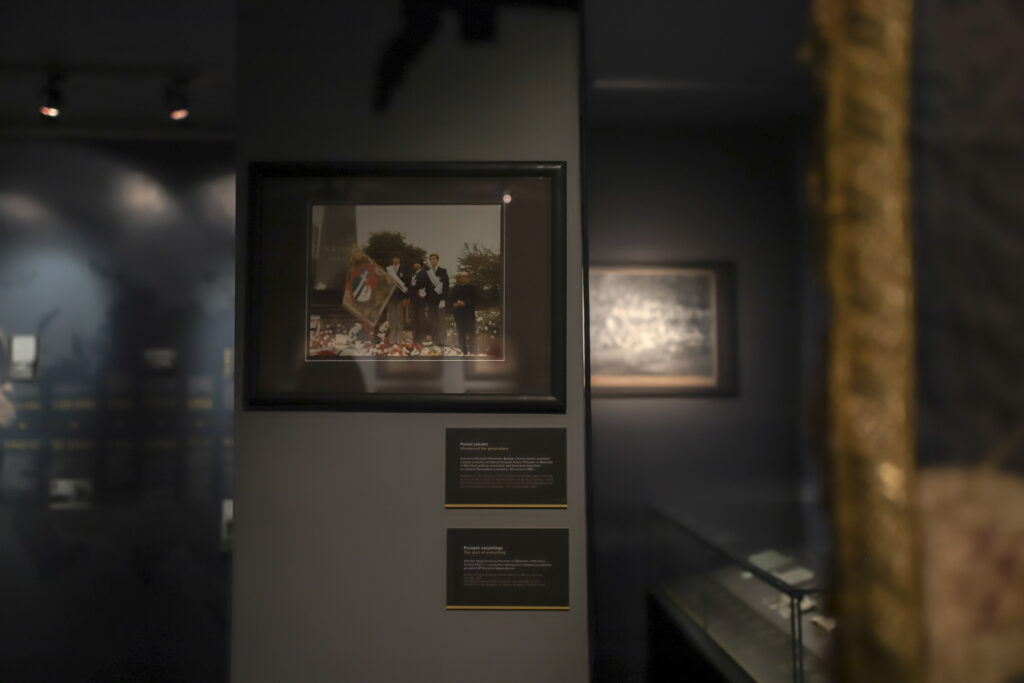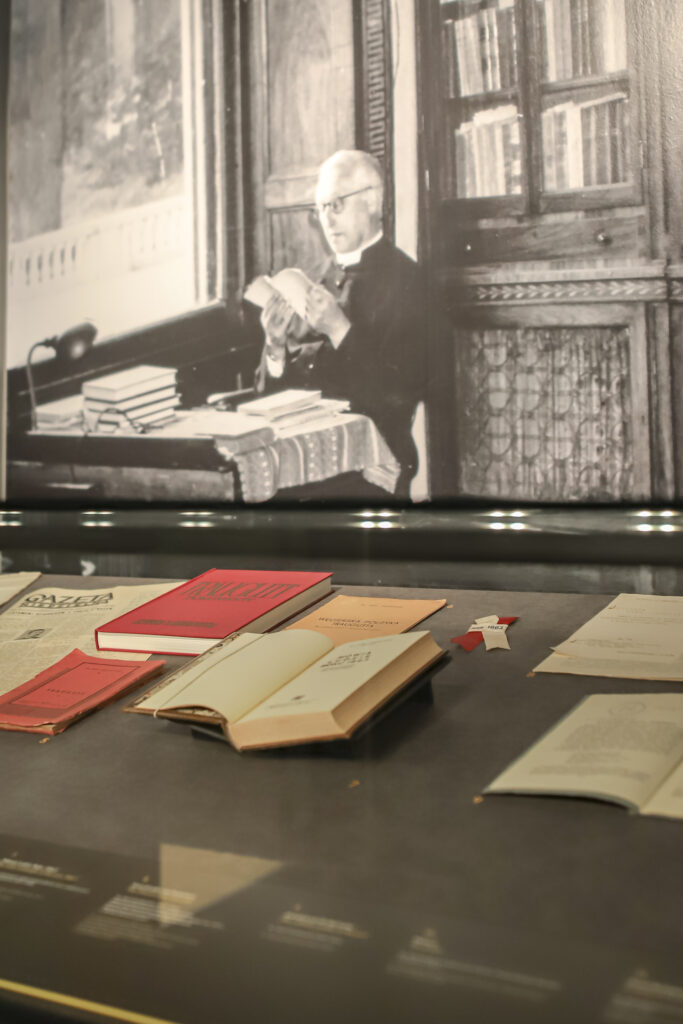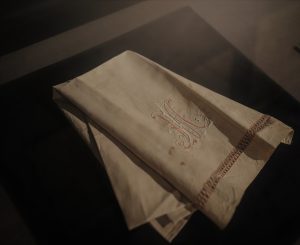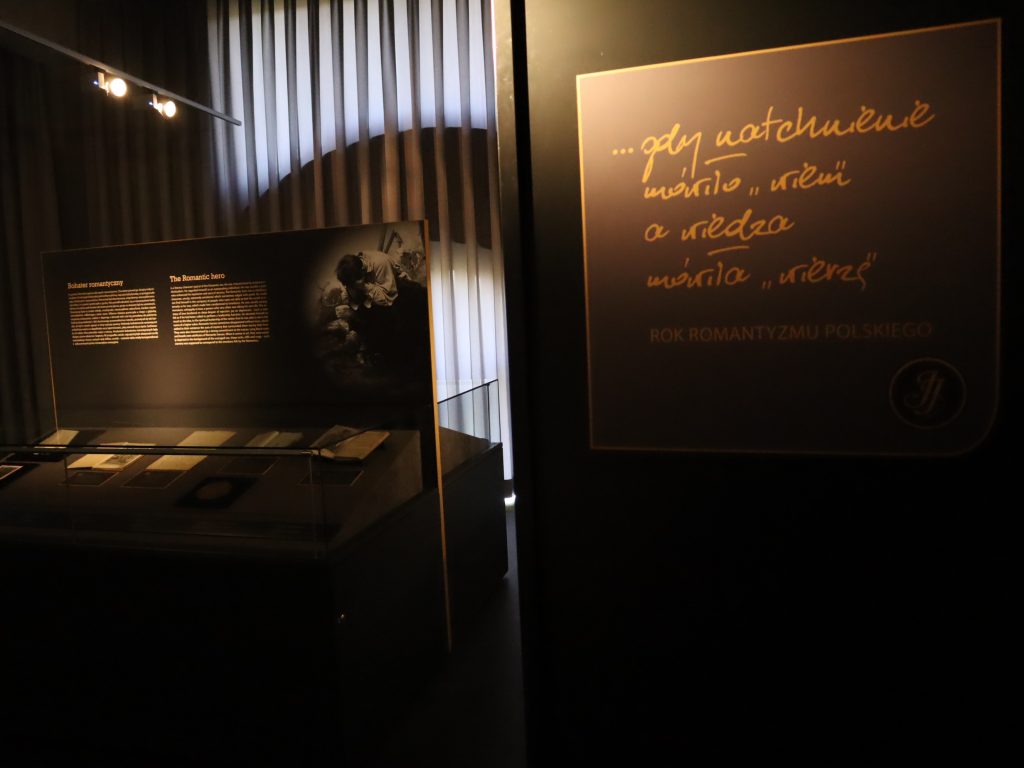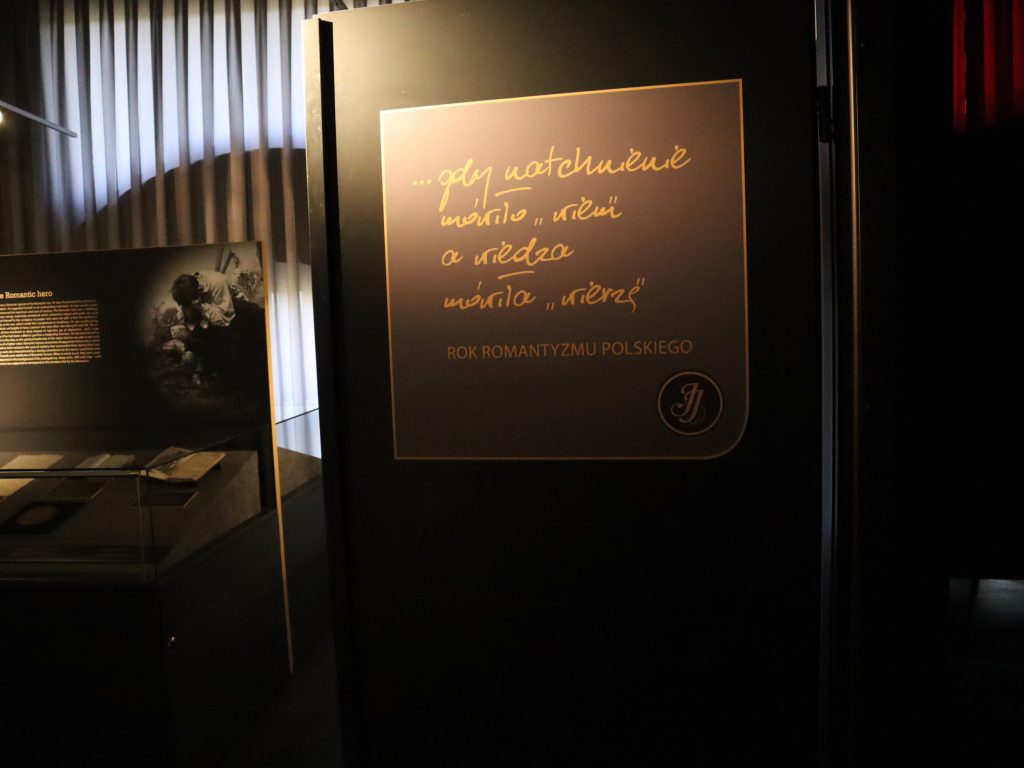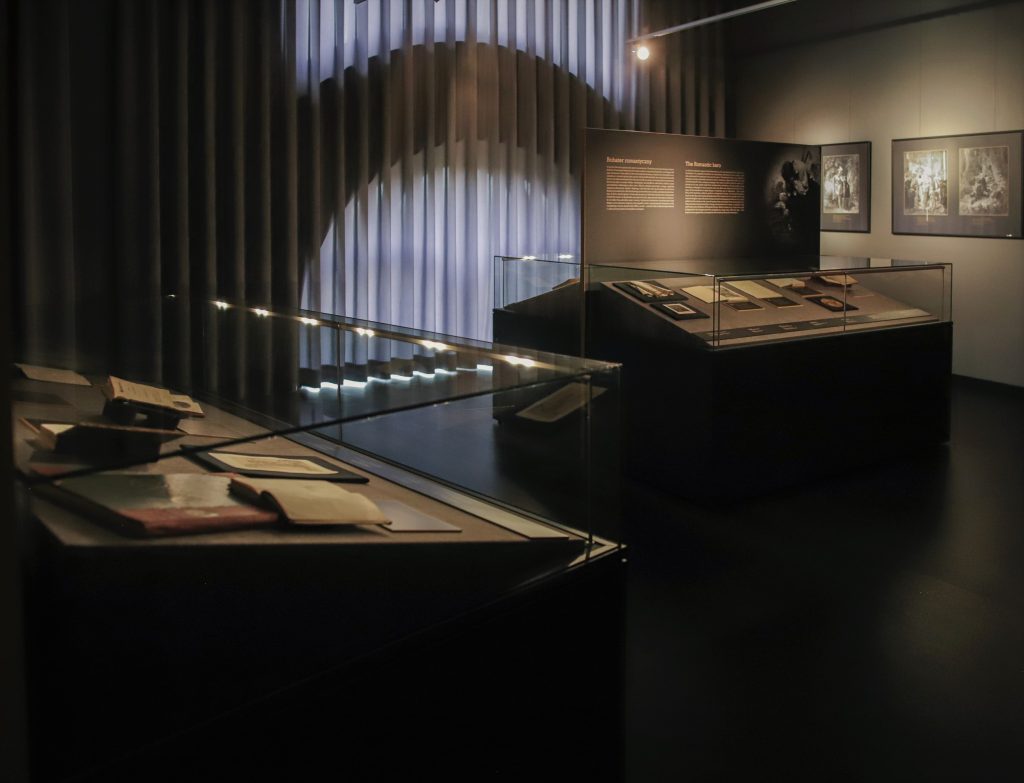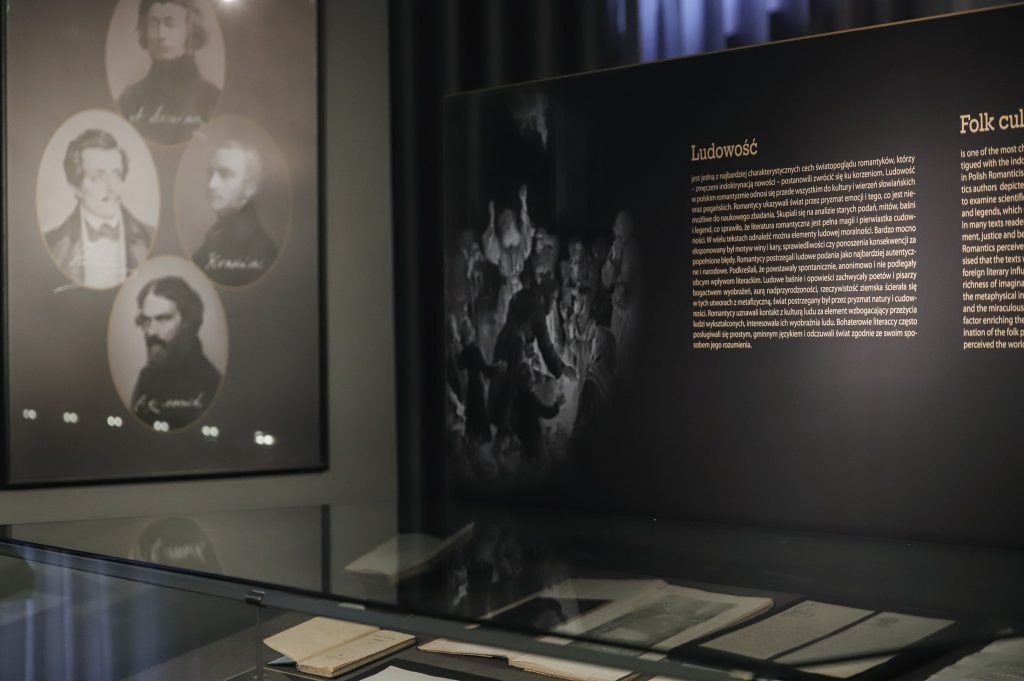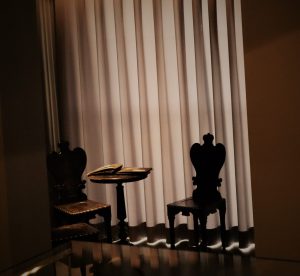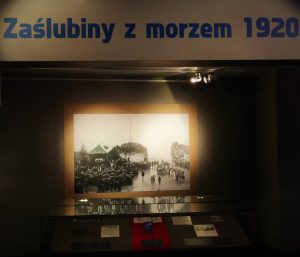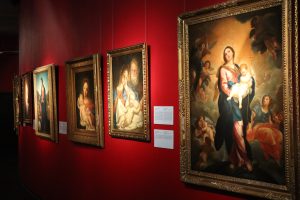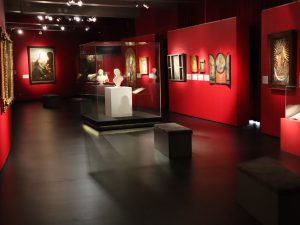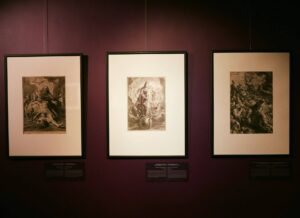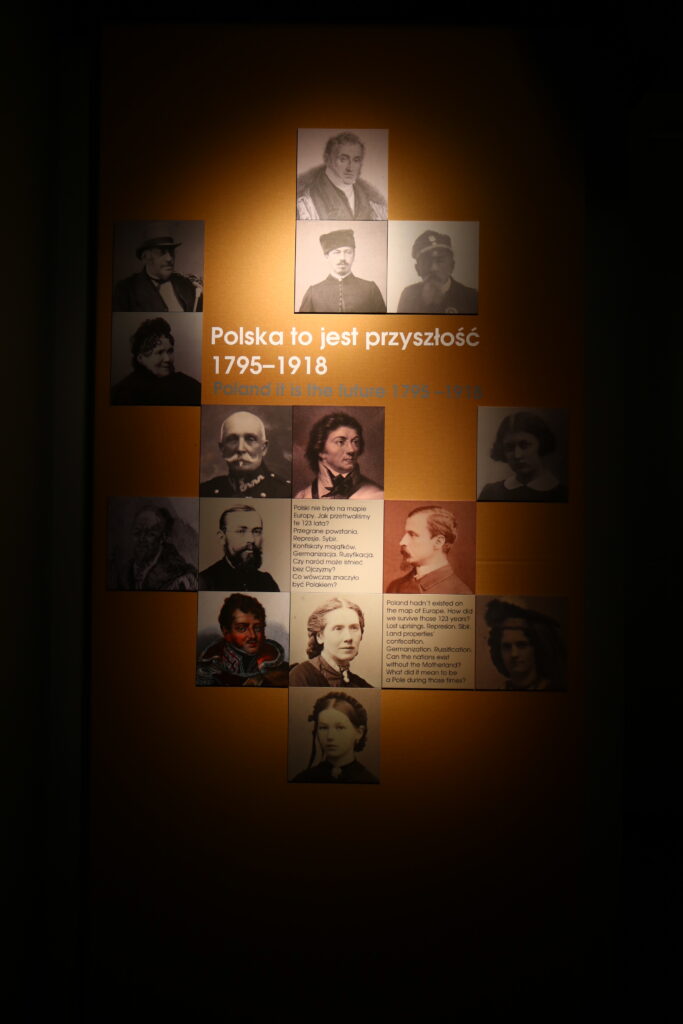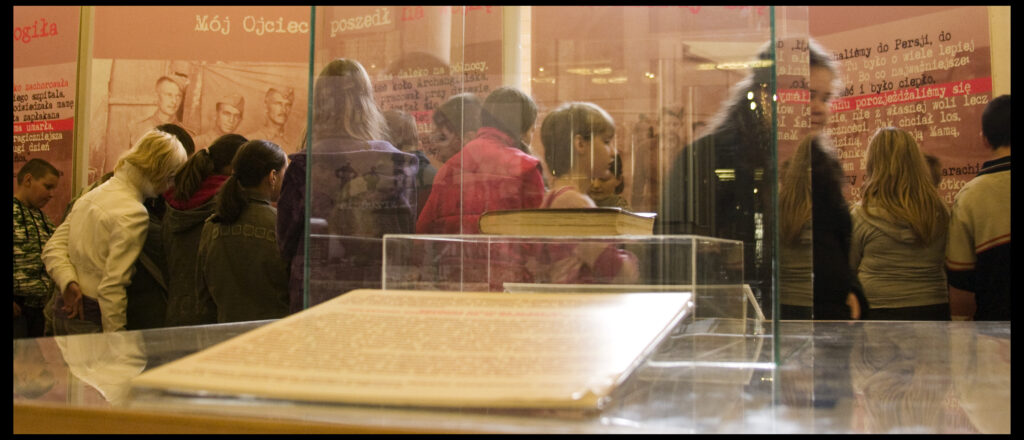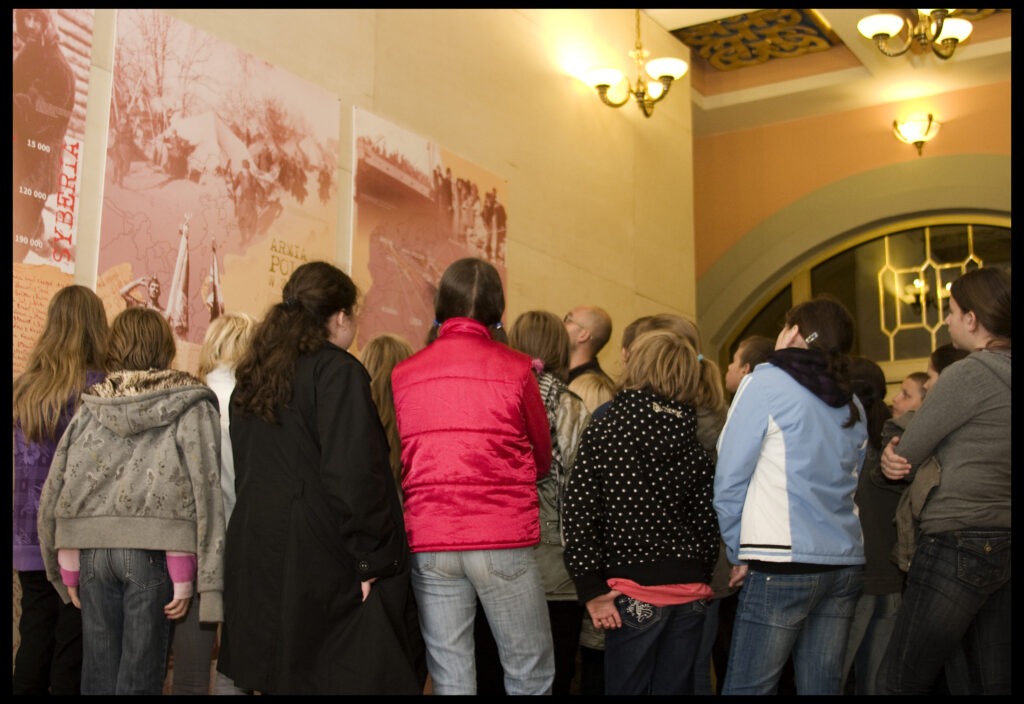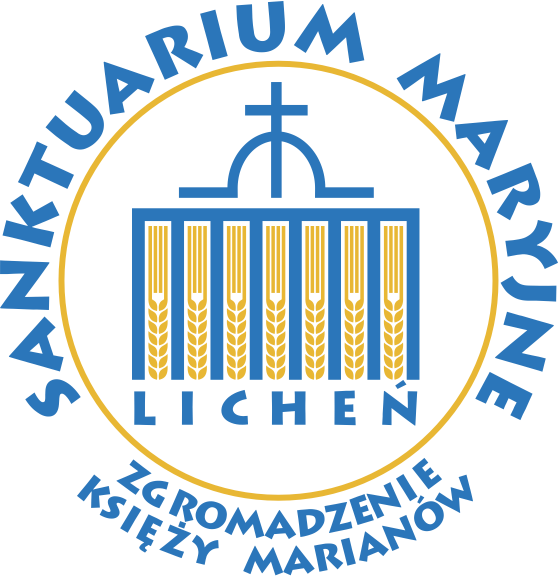Buen Camino! Dobrej drogi!
Z okazji Roku Jubileuszowego, którego hasło przewodnie brzmi „Pielgrzymi nadziei”.
Zapraszamy do licheńskiego muzeum na nową wystawę Buen Camino! Dobrej drogi!
Czym jest pielgrzymowanie?
Zjawisko pielgrzymowania występuje w wielu religiach. Chrześcijanie wzór zaczerpnęli ze Starego Testamentu. Pielgrzymowali do miejsca świętego w celu pokuty, podziękowania Bogu, wypełnienia ślubu, czy z nadzieją na uzyskanie łaski.
Pielgrzymka zawsze była ważnym wydarzeniem w życiu chrześcijan, przybierając w kolejnych epokach różne formy. Wyraża nieustanną czujność człowieka wobec własnych słabości i przygotowuje do przemiany serca. Pomaga dostrzec innych ludzi, którzy także są w drodze.
Co można zobaczyć na tej wystawie?
Piękne grafiki Giovanniego Battisty Piranesiego ukazujące osiemnastowieczny Rzym, niezwykłe pamiątki które przywiózł z Ziemi Świętej gen. Józef Haller, ciekawy wizerunek Matki Bożej z Guadalupe, namalowany na blasze, przywieziony przez ks. Józefa Jarzębowskiego MIC z Meksyku, wyjątkowe zdjęcia z Camino… i wiele innych artefaktów związanych z pielgrzymowaniem. W wielu miejscach pojawiają się także fotografie twórcy naszego muzeum ks. Józefa Jarzębowskiego, który niestrudzenie odwiedzał sanktuaria na całym świecie.
Wystawę można zwiedzać od maja do końca 2025 roku
„Trzej mistrze” Matejko Brandt Siemiradzki Rysunki
Wystawa „Trzej mistrze”, na którą serdecznie zapraszamy, ukazuje fascynujące oblicze sztuki Jana Matejki, Henryka Siemiradzkiego i Józefa Brandta, prezentując ich oryginalne szkice a także reprodukcje obrazów do których te szkice powstały. Kolekcja zostanie pierwszy raz pokazana w całości.
Dlaczego rysunek? Rysunek jest bardzo cennym rodzajem samodzielnej wypowiedzi twórczej i bardzo dobrze pokazuje umiejętności warsztatowe naszych mistrzów. Jest ważny w przygotowaniu projektów i nadal jest podstawową techniką kształcenia warsztatu plastycznego.
Prezentowane rysunki mają niewielki format, ale ich mistrzostwo sprawia, że mogą być traktowane na równi z wielkimi dziełami.
Odwiedzających ekspozycję chcemy zainspirować do spojrzenia na naszych czołowych dziewiętnastowiecznych malarzy poprzez pryzmat ich szkiców, może mniej znanych a jednak bardzo ciekawych i dobrych warsztatowo.
Wystawa będzie czynna do września 2024 r. od wtorku do niedzieli w godz. od 10.00 do 16.00.
Nad rolą szkicowników i rysunków będziemy zastanowić się z młodszymi zwiedzającymi podczas lekcji muzealnej – „Od szkicu do obrazu – Jan Matejko, Józef Brandt, Henryk Siemiradzki”. Na którą także gorąco zapraszamy. Na zajęcia można umawiać się poprzez email: muzeum@lichen.pl
1st floor of the museum
Promienny ślad… Józef Jarzębowski
Nie istnieją już przestronne budynki prestiżowego Kolegium Księży Marianów na Bielanach w Warszawie, w którym to ks. Józef Jarzębowski pracował do II wojny światowej. Pozostały drobne pamiątki tamtych lat: zdjęcia z mamą i wychowankami, regulamin Kolegium, książki z dedykacją, modlitewnik z obrazkami ukochanych świętych, artykuły w prasie o pierwszych wystawach narodowych pamiątek.
W hacjendzie w Santa Rosa w Meksyku, w której w latach 1943-1949 ks. Jarzębowski opiekował się Polakami uratowanymi przez armię Andersa z Sowieckiej Rosji, w tym blisko 700 sierotami, dziś działa dom dziecka. Ale pamięć o księdzu Józefie na zawsze pozostała wśród mieszkańców tej polskiej kolonii i ich potomków. Niezwykłość tego miejsca obrazują uśmiechnięte twarze na licznych fotografiach, szkolne zeszyty dzieci, które przeżyły gehennę wywózek i wykonane przez nie kolorowe wycinanki nawiązujące do polskiej sztuki ludowej.
Posiadłość i pałac w Fawley Court w Anglii, które od 1953 r. służyły edukacji chłopców z rodzin żołnierzy armii Andersa i uciekinierów wojennych a dla wielu z nich były najważniejszym miejscem kultywowania polskości na powrót stały się prywatną, wiejską posiadłością. Na zdjęciach z polskich uroczystości widać tysiące ludzi dla których Fawley Court z Kolegium Miłosierdzia Bożego z internatem stały się polską wyspą w Wielkiej Brytanii. Gdy ks. Jarzębowski wyjeżdżał z Fawley Court do Londynu, by spowiadać, do jego konfesjonału ustawiała się najdłuższa kolejka penitentów. A gdy wracał z rekolekcji głoszonych w Paryżu, wychowankowie czekali zaciekawieni, co też to za polskie pamiątki Ksiądz tym razem przywiózł z podróży.
Żył tylko 67 lat, do tego prawie całe życie chorował na serce.
W 1941 r. uciekając z Litwy zawładniętej przez Sowietów zabrał ze sobą w daleką podróż przez Syberię i Japonię „Memoriał o Miłosierdziu Bożym” ks. Michała Sopoćki. Już w Stanach Zjednoczonych wydał wspólnie z siostrami felicjankami pierwsze obrazki z wizerunkiem Jezusa Miłosiernego, które trafiły do rąk żołnierzy.
Gdziekolwiek był, gdzie tylko rzucił go los, nie zapominał o ratowaniu poloników, oczywiście zawsze z myślą o poszerzaniu kolekcji muzeum, które utworzył przy szkole na Bielanach. Potem, gdy już wiedział, że do Ojczyzny nie wróci, z myślą o muzeum przy Kolegium Miłosierdzia Bożego w Fawley Court.
W tym roku mija sto lat od chwili, gdy 30 września 1923 r. kleryk Józio przyjął święcenia kapłańskie. Zresztą stało się to dopiero przy drugim podejściu, bowiem na pierwsze święcenia w prywatnej kaplicy biskupa Stanisława Galla Józio… spóźnił się. Na jego usprawiedliwienie trzeba powiedzieć, że wtedy w 1923 r. musiał dostać się z podwarszawskich wówczas Bielan na ulicę Miodową w Warszawie pieszo. Przy drugim wyproszonym u kardynała Kakowskiego terminie noc przed święceniami spędził w Warszawie.
W muzeum ks. Józef przychodzi nam na myśl każdego dnia, za każdym razem gdy do rąk bierzemy kolejny eksponat z muzealnej kolekcji.
Wystawą zatytułowaną „Promienny ślad… Józef Jarzębowski” chcieliśmy, wzorem nowicjuszy, którzy w 1954 r. przygotowali dla swojego mistrza – ks. Józefa Jarzębowskiego „Modlitewnik Mariański – w hołdzie Niepokalanej”, pokłonić się księdzu Józefowi „wdzięczni i oddani”. Zrozumiecie nasze uczucia, gdy odwiedzicie Muzeum im. ks. Józefa Jarzębowskiego MIC w Licheniu Starym i zwiedzając je, oglądając prezentowany ułamek całej kolekcji pomyślicie, że sprawił to jeden człowiek – ks. Józef.
Year of Polish Romanticism
In 2022, 200 years have passed since the publication of Adam Mickiewicz's collection "Ballads and romances", published as part of the first volume of "Poetry".
Therefore, the Sejm of the Republic of Poland decided to establish the Year of Polish Romanticism.
W sejmowej uchwale czytamy “Pamięć romantyzmu polskiego jest pamięcią najważniejszych znaków określających narodową tożsamość. W roku 2022 przypadają dwusetne urodziny tej epoki i jest to dobry powód do przypomnienia duchowego depozytu, jaki pozostawili nam romantyczni bohaterowie, artyści i myśliciele” W tekście podkreślono również, że bez twórczości czołowych polskich romantyków „nie bylibyśmy dziś tym, kim jesteśmy”.
The celebration of the Year of Polish Romanticism prompted us to take a new look at the cultural achievements of the Romantic era. Can romanticism inspire, is it understood?
This is how the exhibition was created under the title: "... when inspiration said "I know" and knowledge said "I believe" The Year of Polish Romanticism"
We show 38 exhibits in four showcases. Stopping at each of them, visitors can see e.g. handkerchief by Adam Mickiewicz, the first edition of "Pan Tadeusz", a manuscript by Teofil Lenartowicz, manuscripts and graphics by Cyprian Kamil Norwid, sketches and letters by Józef Ignacy Kraszewski, a sketch by Jan Matejko, as well as 19th-century editions of works by Juliusz Słowacki, Zygmunt Krasiński, and Antoni Malczewski.
The exhibition is intended to remind who the Romantic hero was, where Romantic artists drew inspiration from, to answer the question whether the poet had a "rule of souls" and what about our sense of nationality.
The exhibition will also be open to visitors in 2023.
Poland's Wedding to the Sea 2020
Poland's Wedding to the Sea 2020” (opened in 2020). The exhibition refers to the events from 100 years ago, when General Józef Haller made a symbolic wedding to the sea. Presented here are a priceless souvenir - a wedding ring with the sea. The general received two such wedding rings, one he threw into the sea as a sign of marriage, the other he had on his hand. In this room, we also recall the history of Pomerania's return to the borders of the Republic of Poland. The exhibition was open to visitors until 2021.
2nd floor
HALL OF SACRED ART - In 2020, we opened the exhibition "With Mary through the ages" in this room. We present here the most important iconographic types of Marian representations. You will see here: oil paintings on canvas, icons, images of Mary on pharmacy vases, the depiction of Mary as a baby in a cradle or the image of Mary on Agnusk set in a Mexican reliquary. The exhibition also presents the settings of field altars from the Second World War.
Graphics and drawing room
In 2021, in this room we placed Marian representations made in various graphic techniques: woodcuts, copperplate engravings, etchings, lithographs. It complements the exhibition with Mary through the ages from the previous room. Here you can see, among others color lithography according to the painting of the Van Eyck brothers Annunciation of the Blessed Virgin Maryor copperplate engraving Assumption of the Blessed Virgin Mary Lucas Vorstermans (junior) after a painting by Anthony Van Dyck as well as contemporary images of Our Lady of Lichen.
NOTHING TO ADD, NOTHING TO TAKE: RUBENS, REMBRANDT (EXHIBITION OPEN IN 2019)
Na wystawę złożyły się grafiki obu mistrzów z naszych zbiorów. Ryciny z pracowni Rubensa są w naszej kolekcji bardzo liczne, ze szkoły Rembrandta, posiadamy zaś kilkanaście grafik. W sztuce Europy Północnej nie ma bardziej znanych a jednocześnie kontrastowo różnych artystów jak dwaj wielcy mistrzowie baroku: Flamand Peter Paul Rubens (1577-1640) i Holender Rembrandt Harmenszoon van Rijn (1606-1669). Obaj byli malarzami, żyli w Niderlandach i tworzyli pod wpływem włoskich malarzy. Jednak swoją sztuką odzwierciedlali rozbieżne przekonania: z jednej strony Rubens filozofię katolickiej kontrreformacji, z drugiej Rembrandt reformacji protestanckiej. Rubens i Rembrandt doceniali grafikę. I choć tak bardzo różnie ją pojmowali, choć korzystali z niej w odmienny sposób, obaj zapisali się w jej historii. Śledzenie tych różnic to ciekawa i inspirująca wyprawa do Niderlandów Złotego Wieku. W sprzedaży mamy jeszcze katalogi do tej wystawy.
POLAND IS THE FUTURE (EXHIBITION OPEN FOR THE 100 YEARS OF RESTORING INDEPENDENCE)
The exhibition was to help find answers to the questions: "Can a nation exist without a homeland?" and "Why the persecution by the partitioning powers did not destroy the Polish spirit in our ancestors". It was divided into sections in which we presented various ways of fighting Russification or Germanization: the activity of Poles in exile, education, care for the memory of national heroes through women who guard the Polish tradition and watch over the education of young generations in the spirit of patriotism.
PEOPLE SAY OF THE YEAR 1863 (EXHIBITION OPEN IN 2013)
The title of the exhibition was borrowed from the book by the patron and creator of the Museum - Fr. Józef Jarzębowski - "People of 1863 speak".
The exhibition was organized on the 150th anniversary of the January Uprising. It was planned in such a way as to lead the viewer along two parallel and complementary paths.
The first is the path of private experiences of people who participated in the uprising. Thirteen heroes were selected here. Thanks to the photographs from the museum's collection, the viewer could see what they looked like, and then thanks to the remaining souvenirs: manuscripts, diaries, testimonies, letters, documents, they could learn about their fate and experiences from the time of the January Uprising. All these manuscripts were read by museum employees and, thanks to the help of people living and working in Licheń, selected fragments were read and recorded. If the viewer became interested in any of the characters, he could read who he was and listen to the content of the souvenirs preserved after him.
The second is a walk along a path composed of official Polish and Russian documents, newspapers issued at that time, court judgments, official invitations, leaflets calling for participation in demonstrations, a response from the National Government, etc. The presented documents were consciously selected from among many others.
THE FORGOTTEN GENERAL
Who was General Józef Haller? The exhibition "Forgotten General" was to answer this question.
Here you could see memorabilia belonging to General Haller, incl. Order of the White Eagle and Virtuti Militari, general's uniform, wedding ring between Poland and the Baltic Sea, private correspondence, relics of many saints, Holy Bible, prayer book, rosary, watch, fountain pen and pencil, tie clips and cuff links. Out of this collection of personal items, the image of General Józef Haller emerged not only as a brave soldier, but also as a caring husband and father, a Pole who was very religious and dedicated to the service of his homeland. The story of the Blue General was completed with a multimedia presentation and the General's words about the Blue Army, Poland's wedding to the Baltic Sea and the years of World War II. Archival recordings were made available by Radio Free Europe.
HOW BEAUTIFUL POLAND MUST BE ... (EXHIBITION OPEN IN 2009)
The exhibition "How beautiful Poland must be ..." is a story about the dramatic fate of Poles during World War II seen through the eyes of teenage boys.
The exhibition contained a lot of educational elements about the fate of Poles deported by the Soviets in 1940-41 deep into the USSR. On the prepared boards there was information, incl. about what the deportations were and who affected them, and how, thanks to the uprising of the Anders' Army and the evacuation of the army in 1942, the fate of a handful of survivors happened. This small group included third-class A students who ended their wandering in England in England.
On May 1, 2009, the exhibition was officially opened by Bishop Antoni Dydycz, Ordinarius of Drohiczyn. Together with him, the bishops from Poland and Lithuania, who at that time held their working meeting in Licheń, and the Superior of the Polish Marian Province, Fr. Paweł Naumowicz.
The exhibition was on view in the basilica until October 30, 2009.
BEFORE THE MUSEUM IS ESTABLISHED ...
On July 2, 2008, the Indulgence of the Blessed Virgin Mary of Licheń in the lower basilica of the Sanctuary in Licheń, an exhibition entitled "Before the museum is established ..." was opened. The exhibition announced the opening in the Licheń temple of the museum of Polonica gathered over 80 years by the Marian Fathers.
Three copies of more than 400-year-old Bibles were prepared for the opening day. They were: the first edition of the first Polish translation of the Old and New Testaments, the so-called Leopolita's Bible (Kraków, Mikołaj and Stanisław Szarfenberger, 1560-1561) decorated with 284 woodcuts, published by the reform camp by Mikołaj Radziwiłł, Calvinist Bible, the so-called Brest Bible also called The Radziwiłł Bible (Brześć Litewski, Drukarnia Radziwiłłowska, 1563) and the first edition of the Bible translated by Jakub Wujek, printed by Primate Stanisław Karnkowski (Kraków, Drukarnia Łazarzowa, 1599).
Apart from the Bible, the exhibition featured, among others: Romuald Traugutt's personal items - his glasses, diary, prayer book, mementoes of General J. Haller - uniform, portrait; memorabilia of the Siberians - an altar made of tin cans, a jar with soil and a pine cone from the Katyn forest, and things left by Fr. Józef Jarzębowski, a Marian, creator of the Marian collection.
„Trzej mistrze” Matejko Brandt Siemiradzki Rysunki
Account numbers banking
Account number PL
59 1320 1449 2769 6770 2000 0004
Numer konta Wesprzyj
05 1240 1415 1111 0011 4321 6635
FOR DONORS FROM ABROAD
MORE INFORMATION HERE
